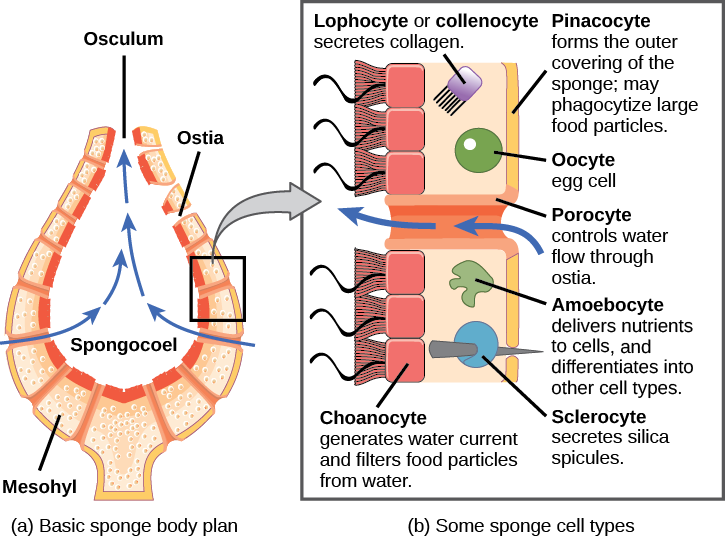In some sponges, the mouth is formed by porosite. This is a single tubular cell that acts as a valve to regulate the flow of water to the sponge coil. Five Facts About Sponges Early fossil records show that sponges inhabited Earth about 600 million years ago. Some deep-sea sponges are more than 200 years old. The sponge is a master filter. They can filter 100,000 times more water every day! In other words, it means a.More. The study found that the sponge contained about 25 genes, much like the human genes found in the "synapses" of nerve cells called neurons. Synapses are bulb-like connections that neurons use to communicate. In humans and many other animals, they play an important role in learning and memory, allowing one sponge cell to survive, reproduce and form a whole new sponge colony. They are so simple that they have no tissues or organs, but they do have specialized cells that perform certain functions such as protection, the creation of water streams, and the breakdown of pathogens. Sponges allow their cells to reconstruct themselves. A sponge is passed through a sieve to break down the cells. The cells recognize each other and reshape into small new sponges.
One sponge cell can survive and propagate to create a whole new sponge colony. They are so simple that they have no tissues or organs, but they do have specialized cells that perform certain functions such as protection, the creation of water streams, and the breakdown of pathogens.
Some interesting points Facts about sponges?
Sponge. sponge. Sponges are classified only as animals. They have cells that are independent of each other but function together in colonies. It is possible for a single sponge cell to survive and reproduce, creating a whole new sponge colony. They are so simple that they have no tissues or organs, but they have special cells
How do sponges communicate with each other?
Pass the sponge through a sieve to break down the cells. The cells recognize each other and reshape into small new sponges. Sponge cells represent the first step towards complex animals. They can communicate with each other and perform some preform-specific functions.
Can a single sponge cell form a colony?
One sponge cell can survive and propagate to create a whole new sponge colony. They are so simple that they have no tissues or organs, but they do have specialized cells that perform certain functions such as protection, the creation of water streams, and the breakdown of pathogens.
How do you disassemble and reassemble the sponge?
Sponges are the only animals that can reconstruct themselves when broken down to the cellular level. A sponge is passed through a sieve to break down the cells. The cells recognize each other and reshape into small new sponges. Sponge cells represent the first step towards complex animals.
What can sponge cells do?
When water filters the outside of the sponge's porosity, the sponge moves, receives food and oxygen, and dispels waste products. Inside the sponge, small hair-like structures called flagella generate an electric current that filters bacteria from the cells of the sponge and traps food in it.
Can sponges be regenerated from a single cell?
The extraordinary ability of the sponge to regenerate is not only the repair of damaged and lost parts, but also the complete regeneration of adults from fragments, and even a single cell. When returned to good condition, these fragments form a complete sponge. ..
What can sponge cells do that other animal cells cannot?
Where does the sponge live? .. What can sponge cells do that other animal cells can't? Reinventing the wheel. How is the skeleton of the sponge different from our skeleton?
What is unique about sponge cells?
Special cells: Sponge has special collar cells (or collar cells) that are unique in the animal kingdom. They have a bristles, whip-like structure and act to set the water flow so that the sponge can sift food particles from the water.

Below you will find two helpful answers on a similar topic. 👇
Do sponges form colonies?Why you shouldn't use sponge on your face?
